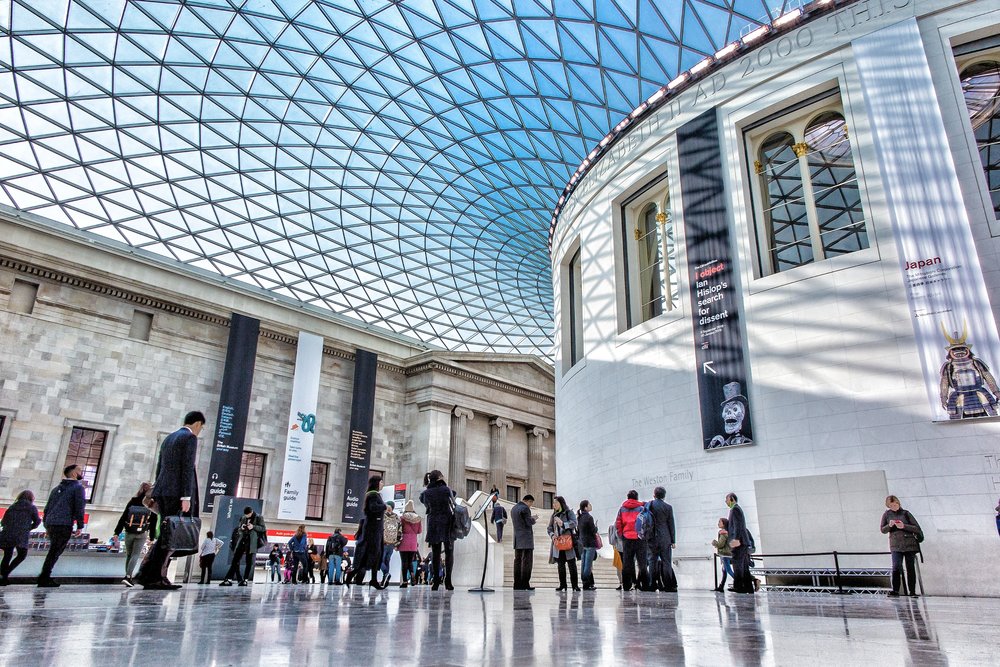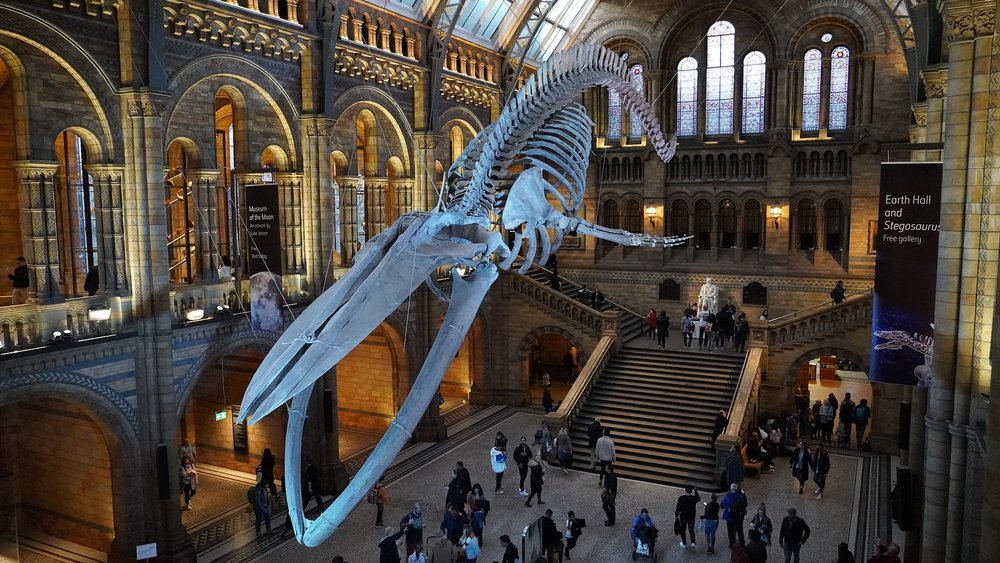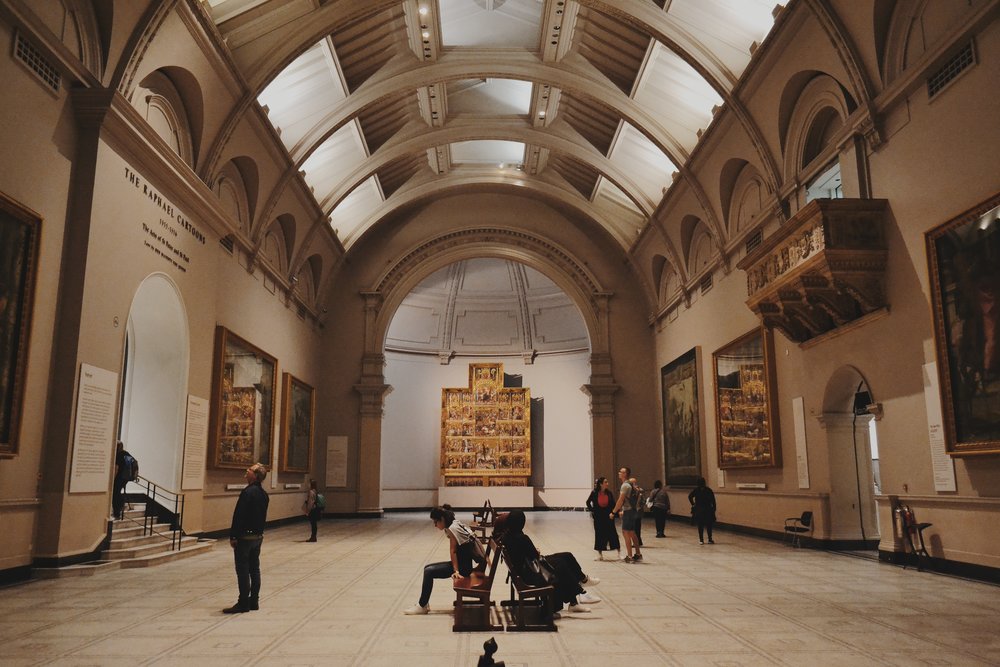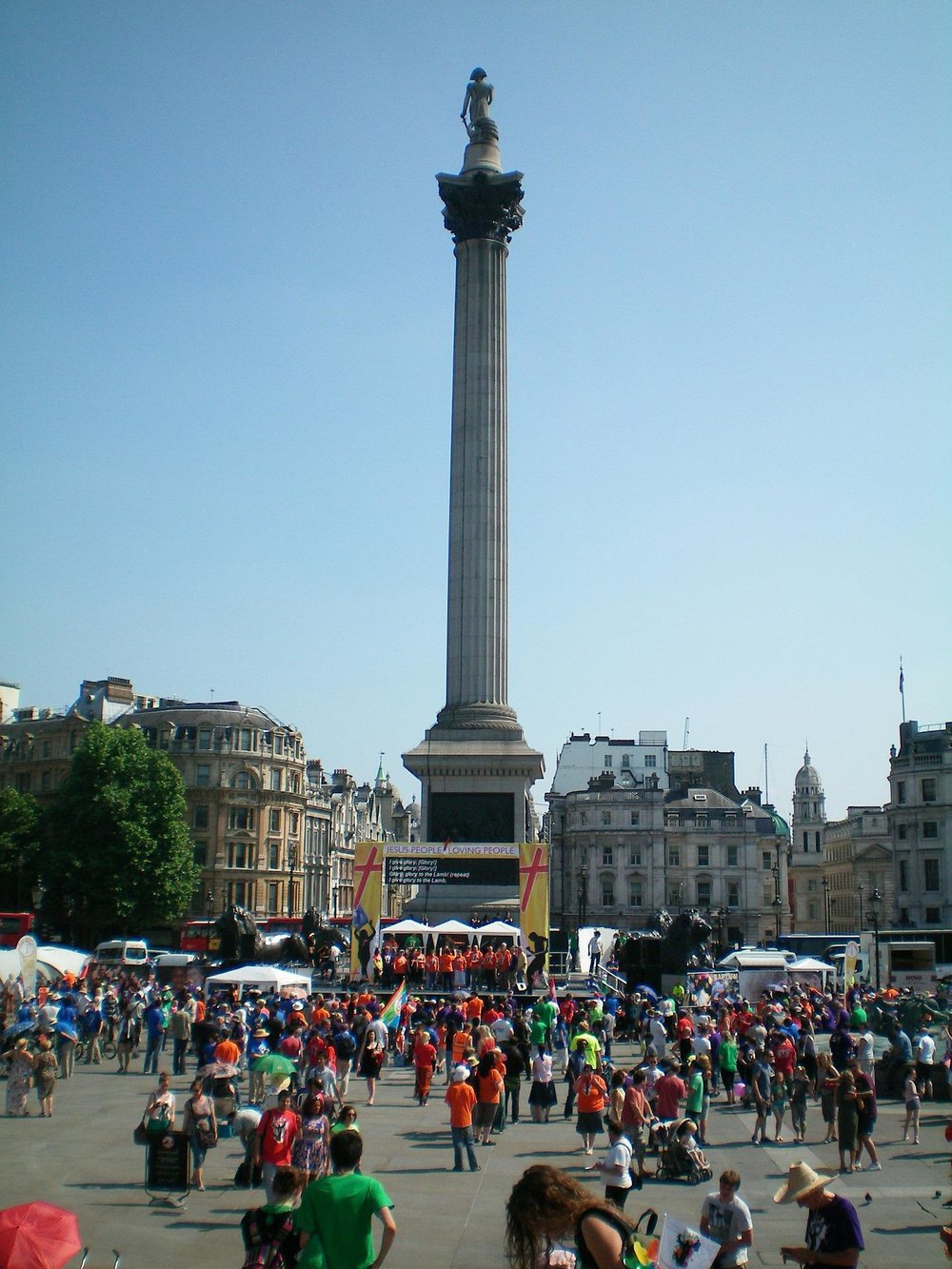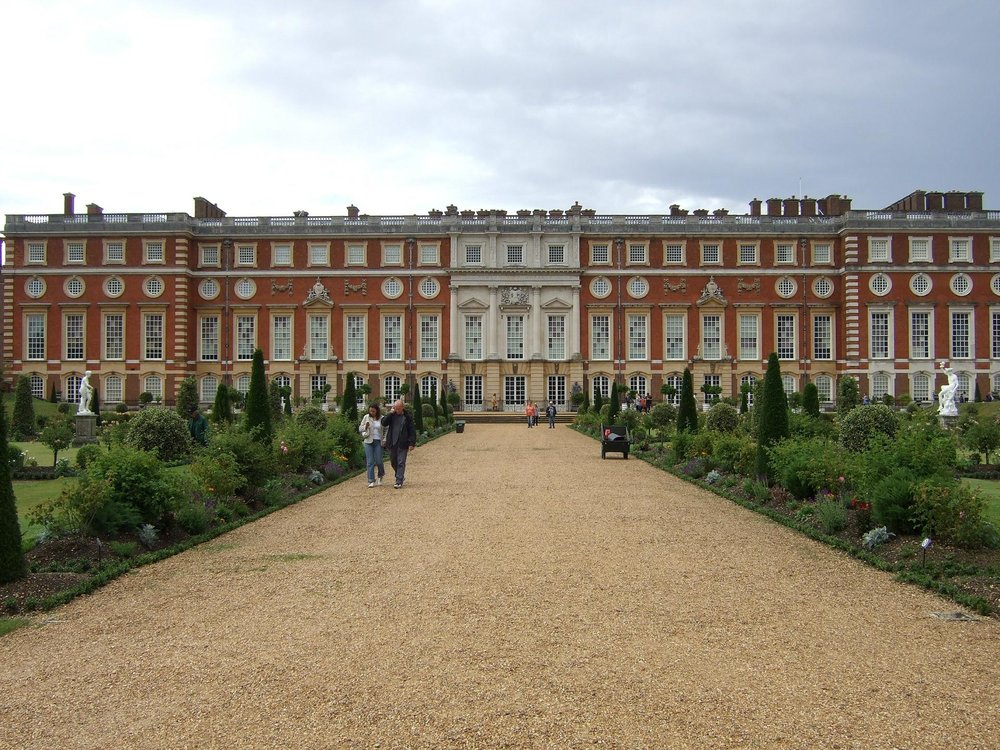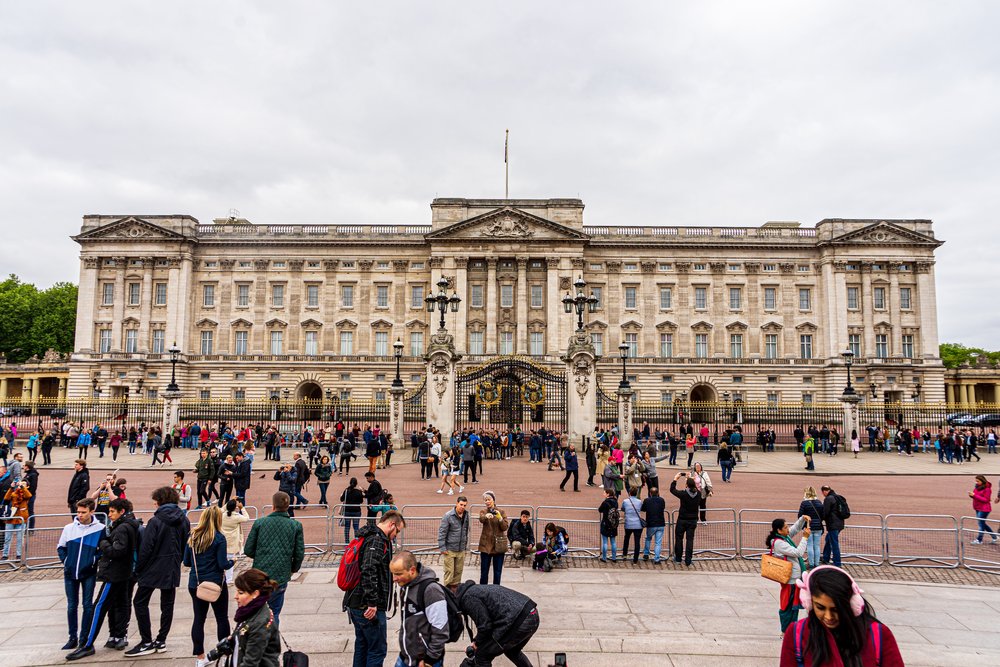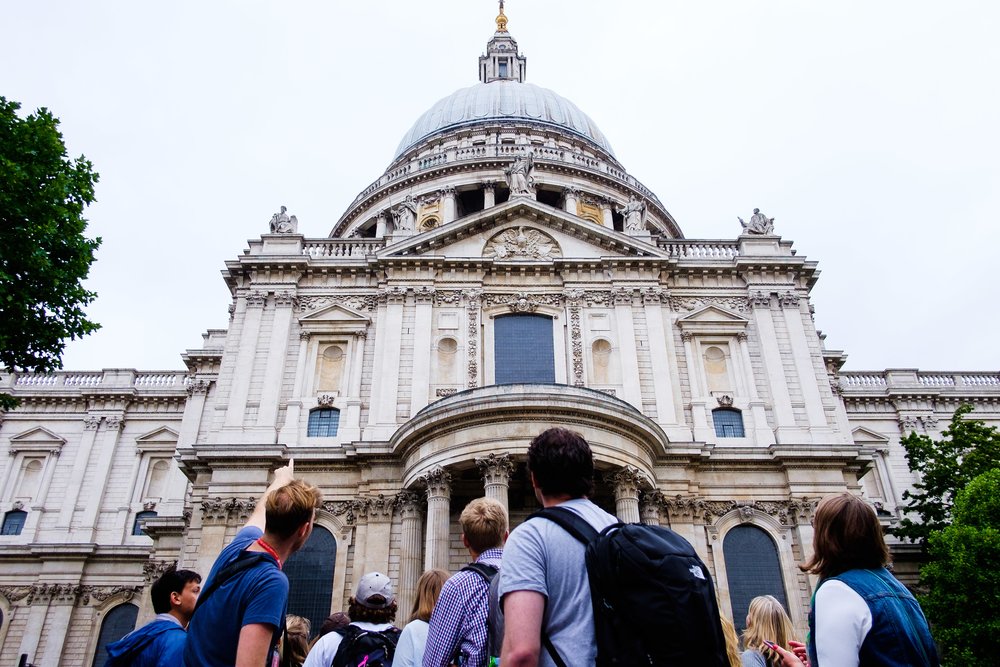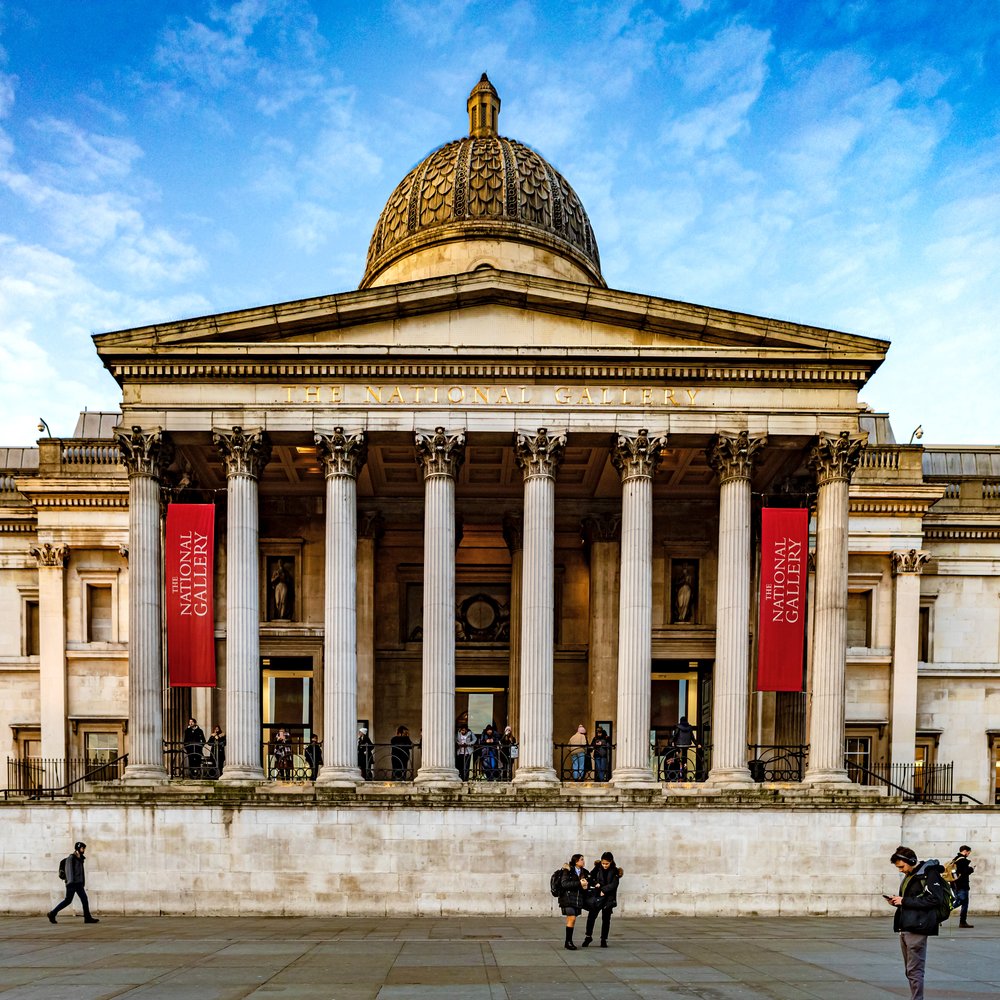Get ready to travel back in time and learn about the history of the United Kingdom!
A bustling city with more than 2,000 years of history, London is simply overflowing with innumerable relics of its antiquity. Throughout the city, you’ll find buildings with rich biographies at almost every corner, with some of them (think Big Ben and the Houses of Parliament) being so famous that they’re instantly recognizable! And though many modern architectural innovations have popped up since the city’s inception, with skyscrapers like The Shard and The Gherkin interspersed with older and smaller buildings, London’s fascinating heritage still shines through and draws in travelers near and far.
If you’re planning a visit to this wonderful city and wish to explore the history of London, then you’ve come to the right place. Here’s our pick of our 10 favorite places in the city that we think show this side of the city best.
1. British Museum
At the top of our list is the ever-famous British Museum, with treasures from all over the world that date back thousands of years. While you walk through the museum, you’ll be transported across time and space as you witness a diverse variety of exhibits that will mesmerize you - from ancient Egyptian artifacts and Chinese ceramics to archaeological discoveries from the Byzantine Empire.
And while the museum has something for everyone and houses interesting exhibits all throughout, we still can’t help but play favorites! If you’ve got only a few minutes for your trip to the museum, then check out The Parthenon Sculptures in Room 18, which features absolutely gorgeous sculptures and friezes. The intricacy of these pieces is further emphasized by the natural light coming in through the museum’s windows, which emphasize varying ridges and grooves depending on the light’s intensity and angle, a phenomenon that cannot be observed from photographs.
Klook Tip: We highly recommend visiting this museum over several days if you can spare the time, as the vast collections make it impossible to see and appreciate everything in a single day (and believe me - we’ve definitely tried!) Some collections are also busier at certain times of the day, so it’s best to either proceed to other sections of the museum first or come back the next day in such scenarios.
2. Kew Gardens
A 121-hectare outdoor space home to a diverse range of plant specimens, the Kew Gardens are typically frequented by outdoor enthusiasts who wish to spend a day exploring nature. You can easily lose track of time as you walk through the different sections of the Kew Garden, including an arboretum with 14,000 tree species and even an entire area dedicated to Japanese landscaping. If you luck out on a clear day during your visit to London, you can make the most out of it by visiting the Kew Gardens!
However, there is much more to the Kew Gardens than just the plants it houses (though the thousands of species there definitely leave a lasting impression!) - the gardens are also home to a number of architectural icons that each come with their own enthralling history. Take, for instance, the Great Pagoda, a 49.5-meter tall pagoda designed by William Chambers. Dating all the way back to 1762, the Great Pagoda withstood blasts during World War II and was even used by the Ministry of Defense for testing. It was restored to its former glory in 2018, which includes repainting it in its entirety and reconstructing the 80 dragons that adorned the pagoda before they mysteriously disappeared in the 1780s.
Other historical buildings in the area include, but are not limited to, the Palm House, a domed hothouse built in 1848 with an aerial walkway, and the Kew Palace, built in 1631 and known as the smallest of all the royal palaces. You’ll find the Royal Kitchens right next to the Kew Palace , which were recently reopened after being completely abandoned since 1818.
3. Natural History Museum
If you’re traveling with children, a visit to the National History Museum in London is a must! Filled with flashy exhibits about dinosaurs, outer space, and a variety of animals, it’s the perfect attraction for anyone who is curious about the world around them and what lies beyond it.
And though the entrance hall is already a sight to behold (check out the massive dinosaur fossils), there is even more to be discovered in the museum’s following four zones:
- Blue Zone - dinosaurs, mammals, and everything else related to the diversity of species on Earth.
- Green Zone - an exhibit where you can follow the evolution of Earth. You’re in for a treat as you walk beneath a skeleton of a blue whale that’s more than 25 meters long!
- Red Zone - a collection that illustrates how volcanoes, earthquakes, and other natural forces shape the Earth on a daily basis.
- Orange Zone - features a wildlife garden where you can interact with local flora and fauna in the heart of London.
To guarantee entry, book a free timed ticket before you visit. Slots are limited and available only to a specific date - if your planned visit day is not currently available on the calendar, then you will need to book your free ticket at a later date.
Klook Tip: The Natural History Museum is frequented by school groups around lunchtime, so it’s best to either come here as soon as it opens or later in the afternoon. It is also wise to avoid visiting on weekends or on school holidays, since it’s almost guaranteed that the museum will be packed on those days. If you’re already in the middle of your visit and become overwhelmed by the crowd, you can easily cross the street and spend a few hours at the Victoria & Albert Museum instead, and then head back to the National History Museum once the crowds have gone.
4. Victoria & Albert Museum
Located right across the National History Museum’s Exhibition Road entrance is the Victoria & Albert Museum, the world’s leading museum of art and design. Here you’ll find more than 2 million objects that highlight the wonders of decorative and applied arts, from fields such as architecture, ceramics, furniture, jewelry, and theater, among many others.
Some of the most popular exhibits in the museum include the Cast Courts, reproductions of world-famous sculptures and architecture (including Michelangelo’s David), and the newly-renovated British Galleries, which feature various items from Great Britain in the 1500-1900s (including the Great Bed of Ware, a bed measuring over three meters wide!). And though we mention these two exhibits in particular, your visit would be made much better if you freely walk around the museum instead, as exploring the V&A’s maze-like corridors is part of the fun.
Our favorite spot in the museum (aside from the exhibits, of course!) is the John Madejski Garden, a shaded courtyard in the center of the museum. Here you can spend some time in-between exhibits just sitting down and enjoying the breeze, maybe with a cup of coffee and a decadent pastry from the nearby cafe. The fountain in the garden is also a great spot for taking souvenir photos, with the museum’s red-brick facade in the background offering a fantastic background. Though taking the perfect shot might be a bit harder than you imagine, as there are usually people playing in the fountain’s waters.
Klook Tip: The V&A Museum hosts educational workshops and temporary ticketed exhibits throughout the year, with themes ranging from David Bowie, genres of music, different types of fashion, and much more. Visit the official website prior to your visit to take a peek at the ongoing events and see if anything catches your attention! Advanced booking for ticketed exhibits is highly recommended.
5. Nelson’s Column
A trip to Trafalgar Square is almost-inevitable for anyone visiting London, especially first-time travelers. As it’s busy at all hours of the day, with tourists flocking to the nearby National Gallery and locals congregating in the square to enjoy any sunny days outdoors, you might be tempted to leave as soon as you snap your souvenir photos and move on to less-crowded areas. But you’ll miss out on a lot by doing so - hidden within the crowds are a number of sculptures that tell important stories of how London came to be.
In the heart of Trafalgar Square, you’ll find Nelson’s Column, a 52-meter tall column that’s guarded by four lions. This part of the square tends to be busier than the others, as children and tourists love to climb atop the lion sculptures to play and take fun photos, so you might not be so keen to approach the column itself. But should you choose to do so, you’ll be rewarded with five different depictions of Admiral Horatio Nelson on the column itself: at the base of the statue are four bronze panels (fashioned from French guns after being melted down) illustrating his greatest naval battles, and at the top, you’ll find a sculpture of Nelson himself facing south!
Though the story of Admiral Horatio Nelson is remarkable in itself, the history of the column's construction makes him even more interesting: public funding for its construction ran into some issues and private donors made up the rest of the funds, with Tsar Nicholas I of Russia donating more than a quarter of the total expenses.
6. Westminster Abbey
Relive more than 700 years of history here at Westminster Abbey, a church in the heart of London that dates back to the medieval era. Having been the site of many national events, ranging from weddings and coronation ceremonies to burials, it’s one of the best places in the city to visit if you’re itching to learn more about its rich history.
Westminster Abbey welcomes you with its splendid exterior, bright white on a sunny day and features a mix of architectural styles. But even though its architecture is stunning in itself, there is much more to be seen once you begin exploring inside: with high ceilings that were intricately carved to perfection, stained glass windows that create a myriad of color combinations, and well-preserved artifacts, a visit to the Westminster Abbey will definitely be an unforgettable experience. You may even hear the choir rehearse or even perform during your trip to the abbey, which makes the whole experience even better!
If you’ve got spare time, we also recommend visiting the abbey’s three gardens, where you can spend a few minutes sitting on the benches and taking in some fresh air as you admire the scenery (visit during spring and summer to see it at its best!) The gardens also offer historical treasures: in the College Garden, you’ll find a dormitory built in the 18th century that’s surrounded by trees planted in the 1850s, and in the Little Cloister Garden, you can take a look at the ruins of the 12th-century St. Catherine’s Chapel.
Klook Tip: For the best experience, try to join a verger-guided tour during your trip to the abbey. Verger tours can be booked directly at the abbey on arrival for GBP 10.00. It is highly recommended to book your entry slot to Westminster Abbey at least 30 minutes before your preferred verger-guided tour is scheduled to start.
7. Hampton Court Palace
Originally owned by Cardinal Thomas Wolsey, who was King Henry VIII’s chief advisor, Hampton Court Palace is regarded as one of the most sophisticated palaces in Europe. And with its opulently-decorated halls and rooms, as well as the 24-hectares of riverside gardens, it’s not hard to see why.
Hampton Court Palace has been expanded and rebuilt several times over the years, which is evident in the palace’s use of two different architectural styles: Tudor, from when it was first built, and Baroque. Though there is a stark contrast between the palace’s use of both Tudor and Baroque architecture, they also share some complementary features as well, including the color of the bricks used and the balance in the height of the buildings.
Much of Hampton Court Palace’s history can be seen within its walls: for instance, you can relive the royal feasts thrown in Henry VIII’s State Apartments as you walk around the Royal Kitchens and the Great Hall, known for its hammer-beamed roof. Hampton Court Palace is also home to the Cumberland Art Gallery, which features hundreds of works from the Royal Collection, including some of the finest paintings from Duccio, Van Dyck, and Rembrandt.
The gardens outside of the palace are equally-mesmerizing as the palace itself: here you can wander through the world’s oldest puzzle maze or just walk around the riverside gardens to admire the view. The gardens are also host to a range of fun activities for travelers of all ages - here you can witness exciting shows and events such as jousting, charabanc tours in the summer, and even an ice rink in the winter!
8. Buckingham Palace
The official London residence of the British monarchs since 1837, Queen Elizabeth II spent her time in Buckingham Palace during her reign. The palace announces her presence through the use of the flag by the entrance: if she is currently residing in Buckingham Palace, the Royal Standard flag (using yellow, red, and blue colors) is flown. If not, then the Union Flag (in red, white, and blue) is flown in its stead.
Buckingham Palace is open to the public only in the summer when the Queen is on vacation, typically from mid-July to September. During this time, you’ll be able to visit the State Rooms and experience the changing of the guard, a 45-minute ceremony which takes place on select days in summer (make sure to check the schedule on the official website before you go!). If you visit outside of those months, you will not be able to visit the State Rooms and see the changing of the guard, except in winter when the ceremony occurs on alternating days.
If you do manage to enter the palace, then you’re in for a treat: though you’ll only be able to visit 19 out of Buckingham Palace’s 775 rooms, all of them feature some of the finest furniture in the world! The rooms also showcase various pieces from the Royal Collection, such as paintings from Canaletto and Rembrandt. You’ll also learn about the history of each room and their uses today, such as The Grand Staircase, where tours typically begin, and The White Drawing Room, which serves as the reception room on official occasions.
Klook Tip: The tour through the palace’s State Rooms can last for a while, so we recommend having a snack and using the toilet before you start it, as the cafe and the restrooms can be found only at the very end.
9. St. Paul’s Cathedral
Built by Sir Christopher Wren to replace the old church that was burned down during the Great Fire of London in 1666, St. Paul’s Cathedral has become one of London’s most iconic heritage buildings throughout the years. Built on top of four previous cathedrals and having survived two wars, the cathedral is considered by many to be a symbol of hope and resilience. The dome of St. Paul’s Cathedral is also an integral part of the city’s iconic skyline, with its curved structure easily identifiable even from afar.
Church services are held in the lower section of the cathedral, where you can listen to the choir perform alongside the musicians. You’ll also see eight different paintings of St. Paul, as well as visit the crypt, where you’ll find the tombs of the first Duke of Wellington and Sir Christopher Wren himself, his tomb bearing the following inscription in Latin: “If you seek his monument, look around you.”
However fascinating the lower floor of the cathedral may be, no visit to St. Paul’s Cathedral would be complete without a trip to its iconic dome: walking up the 560 steps to the top, with stops at each of the three galleries (Whispering Gallery, Stone Gallery, and Golden Gallery) in-between, is simply a must. And though it may be a tough climb, you will be well-rewarded for it once you reach the top, where you’ll get some of the best views over London!
10. National Gallery
Housing masterpieces from the 13th to the 20th century, the National Gallery is a must-visit for any art aficionado! Boasting an extensive collection across different time periods and art styles, you can easily spend hours walking around the gallery as you observe the thousands of artwork inside. Some of our favorite pieces include the following:
- The Boulevard Montmartre at Night by Camille Pissarro - one of the fourteen paintings of the Boulevard Montmartre in Paris by Pissarro, this particular one uses brush strokes and colors to produce a scene of motion during a rainy evening, with the passing crowds and vehicles surrounded by artificial lights from the storefronts and their reflections in the puddles. (We even brought a print of it from the gift shop!)
- Sunflowers by Vincent Van Gogh - one of Van Gogh’s most iconic paintings, Sunflowers bears his signature style: expressive and dramatic strokes that add a sense of movement to his paintings, with paint layers thickly laid-on. This painting depicts the vase of sunflowers at different stages, some just about to bloom, some having just bloomed, and some already spent.
- The Arnolfini Portrait by Jan Van Eyck - what appears to be a typical portrait of a bourgeois man and a woman has become renowned for the intrigue behind it - with the couple standing in a room deemed to have an impossible construction, many find themselves wondering how a chandelier would even fit inside a room so small, or how there is no room for a fireplace, which they were expected to have during the time the painting was made. People are also curious about the two men seen in the mirror: is one of them Jan Van Eyck himself or is he not included in the painting at all?
Klook Tip: Like most of the museums on this list, the National Gallery hosts limited-time events and exhibitions that highlight different topics. It is highly recommended to check the events that will take place during your planned date of visit and book tickets in advance, as the more popular ones tend to sell out.
Though the above list consists mostly of free things to do in London, some of the featured attractions will require tickets to enter. You can either book your tickets individually or get the London Pass instead, which includes entry to Westminster Abbey, Hampton Court Palace, St. Paul's Cathedral, Buckingham Palace Gardens (state rooms tour excluded), and many other popular attractions in London!
For easy travels between attractions, you can also try booking tickets for the London City Sightseeing Bus Pass, which stops at famous and historic destinations throughout London. With convenient stops in the city, it's one of the best ways to travel across London!
Now that we’ve given you an idea of where to go in London during your visit, it’s now time to actually start creating an itinerary for your dream London vacation! If you need more help with planning your London itinerary, you can check out our other guides below. Bon voyage!



